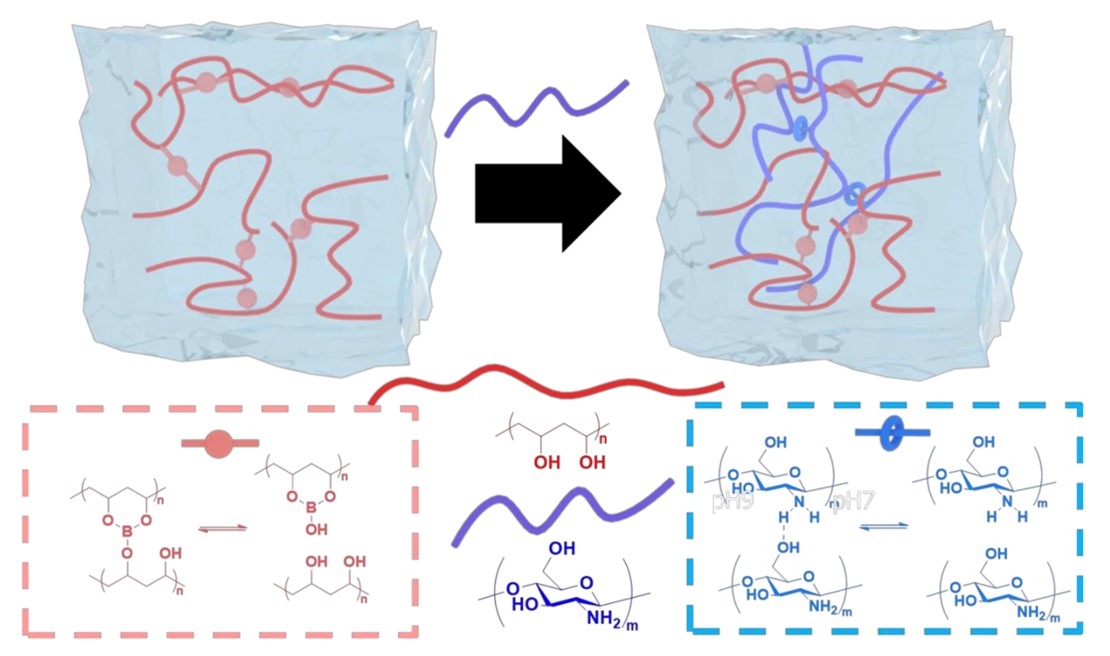A hydrogel that can naturally stretch and self-heal while adhering to the body, enabling new designs for medical adhesives.
Problem:
Hydrogels are naturally biocompatible materials which could revolutionize diverse medical technologies ranging from artificial muscles to wearable electronics. Their simple non-toxic composition along with their non-rigid structure allows the material to easily conform to the human body. Hydrogels, however, could have poor stretchability, weak adhesion (especially when wet), and limited self-healing mechanisms. This prevents their use in spaces like the cranial cavity, where electronic signals could be administered to treat seizures.
Technology:
First, polyvinyl alcohol is dissolved in a buffer solution. Then, boronic acid and optional chitosan is added, resulting in a thick hydrogel. Additives like dyes or conductive MXene sheets can be added for extra functionality such as increased electric conductivity. The dynamic boronic ester bonds enable bond exchanges which promote high strength and fast healing at defect sites. The bonds in chitosan allow quick adhesion in air or water alike.
Advantages:
- Stretchable up to 310 times original length.
- Chitosan enables strong adhesion in air or water.
- Self-healing within 5 seconds.
- May be imbued with MXenes or carbon nanotubes to achieve conductivity around 30 μS/cm.
- May be encapsulated with drugs or dyes.
- Non-toxic composition.
- Requires simple mixing of inexpensive ingredients, leading to low manufacturing costs.

The hydrogel comprises polyvinyl alcohol dynamically crosslinked with boronic acid (left), with additional chitosan to provide extra strength and wet adhesion (right). A typical recipe has a 15:1 weight ratio of PVA to BA with around 2 wt% chitosan. This provides extreme stretchability, natural adhesion in both air and water, and nearly instant self-healing.
Case ID:
22-10027-tpNCS
Web Published:
5/12/2023
Patent Information:
| App Type |
Country |
Serial No. |
Patent No. |
File Date |
Issued Date |
Expire Date |